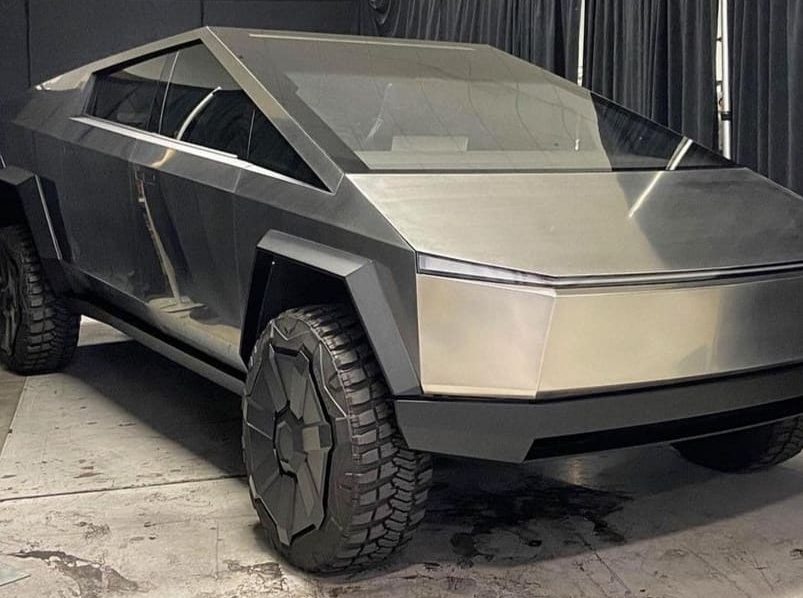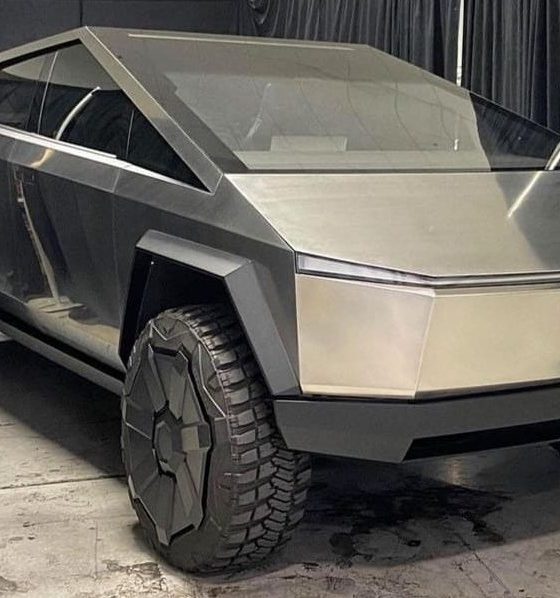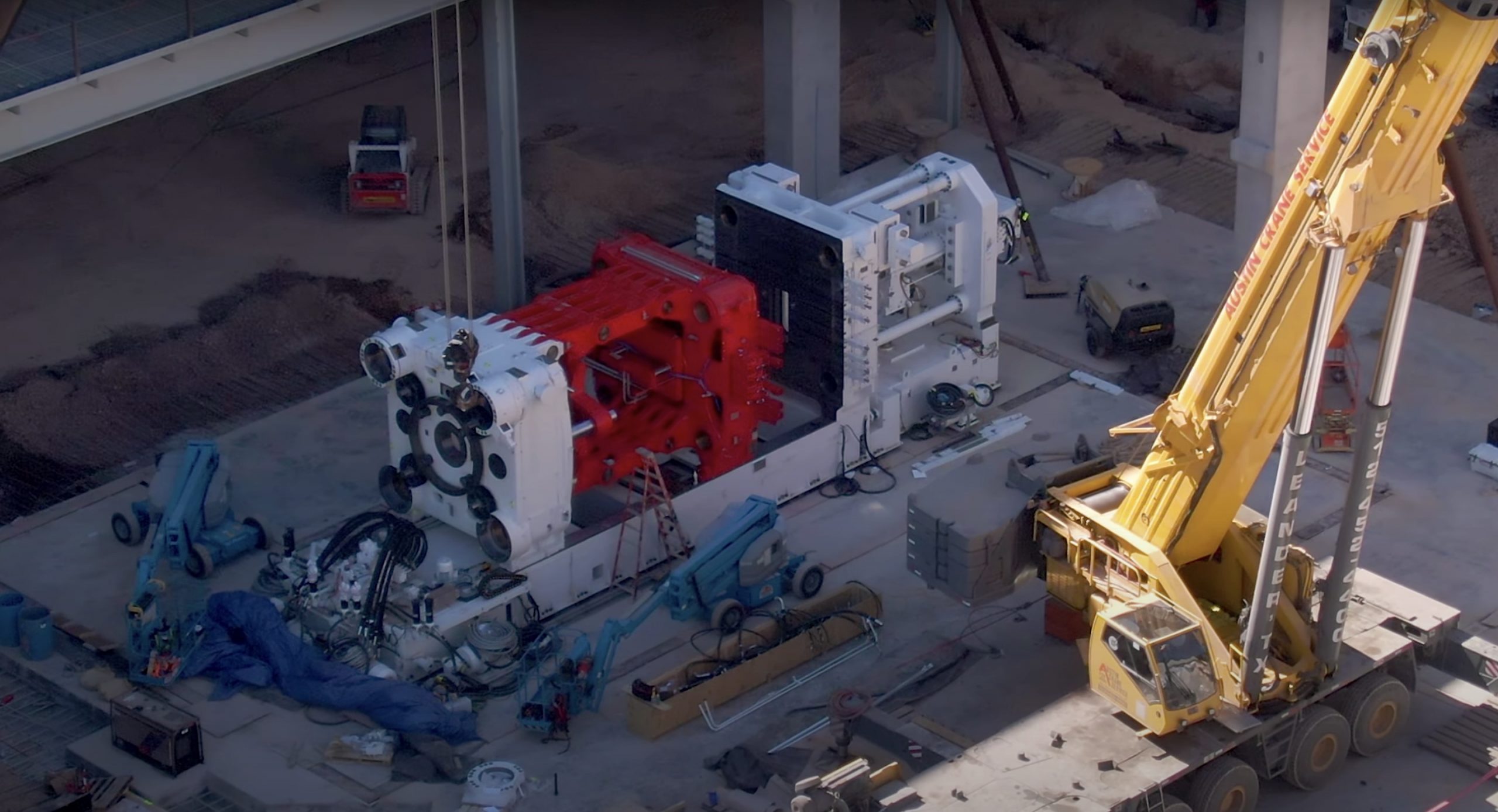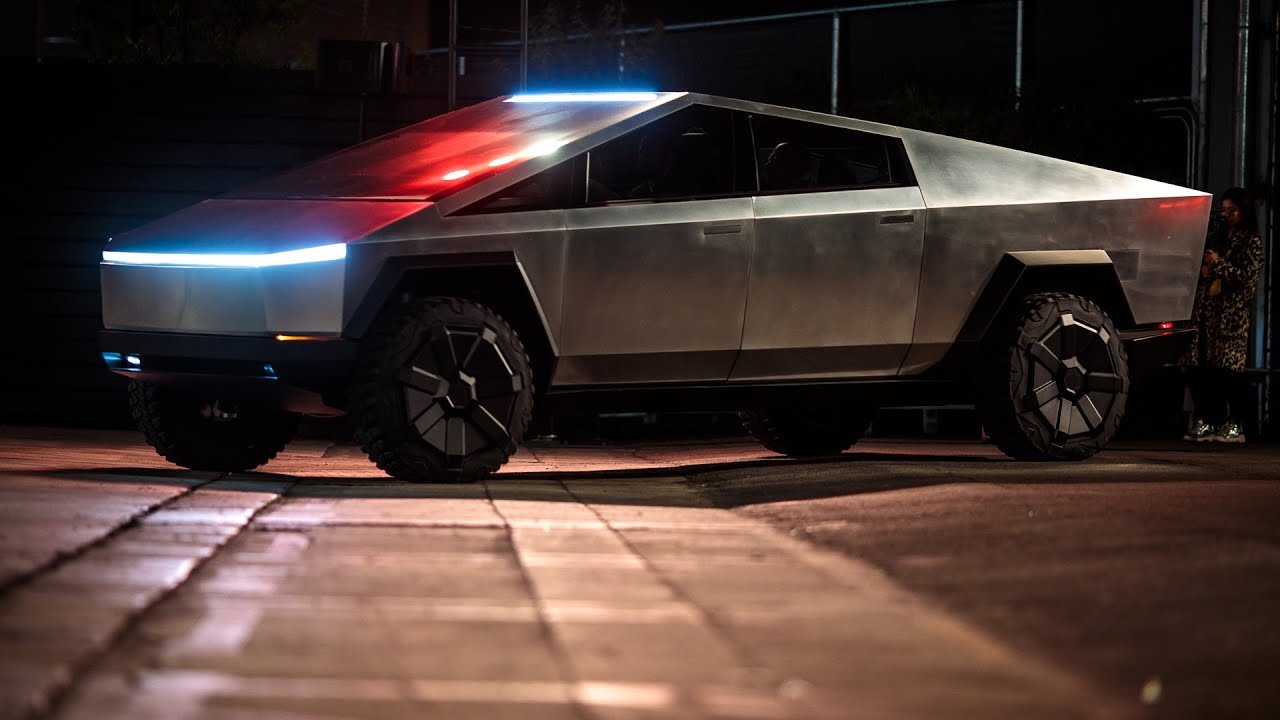

News
Tesla’s Cybertruck strategy is paving the way for pilot production that’s closer to home than expected
Elon Musk may still have accuracy issues when estimating the rollout dates of products like the Full Self-Driving Beta, but there is no denying that the Tesla CEO is starting to learn the art of sandbagging, at least to some degree. This is something that Elon Musk appears to be doing with the Tesla Cybertruck’s upcoming production, which is expected to begin its trial phases either late 2021 or early next year. Musk has been pretty conservative about the all-electric pickup trucks’ production in Gigafactory Texas, but if a recent report from the EV community is any indication, Tesla may have an ace up its sleeve for its Cybertruck rollout.
The Tesla Cybertruck has always been fated to be built in Gigafactory Texas, so much so that the facility was known in the electric vehicle community in the past as the “Cybertruck Gigafactory.” Yet over the months and as production equipment was spotted on the massive Texas-based complex, it became evident that it would not be the Cybertruck that would be produced first in Giga Texas. It would be the Model Y. This was hinted at by the Model Y Giga Press machines that have been spotted in the area.

The idea of Giga Texas starting its operations with the Model Y makes sense considering the demand for the all-electric crossover and the fact that the Fremont Factory is stretched thin as it is. However, it would not be an exaggeration to note that a good number of Tesla enthusiasts were a bit disappointed that the Texas-based facility would not be launching its operations with the production of the Cybertruck, a vehicle that seemed to be explicitly designed for Giga Texas production.
Fortunately, it appears that Tesla may have a plan to ensure that Cybertruck production in Gigafactory Texas does not get too delayed. Just recently, a number of EV community members such as FSD Beta user @WholeMarsBlog were informed that Tesla is already making the necessary moves to develop the Cybertruck’s prototype production lines. This reportedly involves Tesla building a pilot line for the all-electric pickup truck in the Fremont Factory. With such a prototype line in place at Fremont, Tesla could hit the ground running in Giga Texas.
These reports were immediately echoed by other EV community members, some of whom cited information reportedly related by Tesla employees from the Fremont Factory. Some have even remarked that Tesla employees moving to Texas due to the Cybertruck factory would be relocating to the Lone Star State around the end of May. Granted, these updates should be taken with a grain of salt, but they still highlight the fact that Tesla may actually have a pretty solid plan to ensure that the Cybertruck enters mass production as quickly and as smoothly as possible.

While unorthodox, Tesla’s recently reported strategy for the Cybertruck’s rollout actually makes quite a lot of sense. Having a line in Fremont for prototype validation vehicles would all but ensure that the Cybertruck’s lines in Gigafactory Texas would not require any substantial changes or adjustments when they are activated for mass production. But this is not all. The Fremont Factory is also a stone’s throw away from Tesla’s Roadrunner site, where the company is currently developing and ramping the production of its custom dry-electrode, tabless 4680 cells—the batteries that would most likely be used on the Cybertruck.
What’s particularly interesting about these recent updates is the fact that Elon Musk appears to be sandbagging the expectations surrounding the Cybertruck or Tesla’s 4680 battery cells. Unlike his typical tweets about the development of FSD features like Summon, Musk’s updates about the Cybertruck over the past months have been scarce and vague at the most. His estimated timeframes for the truck have been conservative as well. That being said, if Tesla is indeed preparing to start a pilot line in Fremont for the Cybertruck, then the company could very well be holding an ace up its sleeve—one that could shake the electric pickup market to its core when it is played.
Don’t hesitate to contact us for news tips. Just send a message to tips@teslarati.com to give us a heads up.

News
Tesla FSD fleet is nearing 7 billion total miles, including 2.5 billion city miles
As can be seen on Tesla’s official FSD webpage, vehicles equipped with the system have now navigated over 6.99 billion miles.

Tesla’s Full Self-Driving (Supervised) fleet is closing in on almost 7 billion total miles driven, as per data posted by the company on its official FSD webpage.
These figures hint at the massive scale of data fueling Tesla’s rapid FSD improvements, which have been quite notable as of late.
FSD mileage milestones
As can be seen on Tesla’s official FSD webpage, vehicles equipped with the system have now navigated over 6.99 billion miles. Tesla owner and avid FSD tester Whole Mars Catalog also shared a screenshot indicating that from the nearly 7 billion miles traveled by the FSD fleet, more than 2.5 billion miles were driven inside cities.
City miles are particularly valuable for complex urban scenarios like unprotected turns, pedestrian interactions, and traffic lights. This is also the difference-maker for FSD, as only complex solutions, such as Waymo’s self-driving taxis, operate similarly on inner-city streets. And even then, incidents such as the San Francisco blackouts have proven challenging for sensor-rich vehicles like Waymos.
Tesla’s data edge
Tesla has a number of advantages in the autonomous vehicle sector, one of which is the size of its fleet and the number of vehicles training FSD on real-world roads. Tesla’s nearly 7 billion FSD miles then allow the company to roll out updates that make its vehicles behave like they are being driven by experienced drivers, even if they are operating on their own.
So notable are Tesla’s improvements to FSD that NVIDIA Director of Robotics Jim Fan, after experiencing FSD v14, noted that the system is the first AI that passes what he described as a “Physical Turing Test.”
“Despite knowing exactly how robot learning works, I still find it magical watching the steering wheel turn by itself. First it feels surreal, next it becomes routine. Then, like the smartphone, taking it away actively hurts. This is how humanity gets rewired and glued to god-like technologies,” Fan wrote in a post on X.
News
Tesla starts showing how FSD will change lives in Europe
Local officials tested the system on narrow country roads and were impressed by FSD’s smooth, human-like driving, with some calling the service a game-changer for everyday life in areas that are far from urban centers.

Tesla has launched Europe’s first public shuttle service using Full Self-Driving (Supervised) in the rural Eifelkreis Bitburg-Prüm region of Germany, demonstrating how the technology can restore independence and mobility for people who struggle with limited transport options.
Local officials tested the system on narrow country roads and were impressed by FSD’s smooth, human-like driving, with some calling the service a game-changer for everyday life in areas that are far from urban centers.
Officials see real impact on rural residents
Arzfeld Mayor Johannes Kuhl and District Administrator Andreas Kruppert personally tested the Tesla shuttle service. This allowed them to see just how well FSD navigated winding lanes and rural roads confidently. Kruppert said, “Autonomous driving sounds like science fiction to many, but we simply see here that it works totally well in rural regions too.” Kuhl, for his part, also noted that FSD “feels like a very experienced driver.”
The pilot complements the area’s “Citizen Bus” program, which provides on-demand rides for elderly residents who can no longer drive themselves. Tesla Europe shared a video of a demonstration of the service, highlighting how FSD gives people their freedom back, even in places where public transport is not as prevalent.
What the Ministry for Economic Affairs and Transport says
Rhineland-Palatinate’s Minister Daniela Schmitt supported the project, praising the collaboration that made this “first of its kind in Europe” possible. As per the ministry, the rural rollout for the service shows FSD’s potential beyond major cities, and it delivers tangible benefits like grocery runs, doctor visits, and social connections for isolated residents.
“Reliable and flexible mobility is especially vital in rural areas. With the launch of a shuttle service using self-driving vehicles (FSD supervised) by Tesla in the Eifelkreis Bitburg-Prüm, an innovative pilot project is now getting underway that complements local community bus services. It is the first project of its kind in Europe.
“The result is a real gain for rural mobility: greater accessibility, more flexibility and tangible benefits for everyday life. A strong signal for innovation, cooperation and future-oriented mobility beyond urban centers,” the ministry wrote in a LinkedIn post.
News
Tesla China quietly posts Robotaxi-related job listing
Tesla China is currently seeking a Low Voltage Electrical Engineer to work on circuit board design for the company’s autonomous vehicles.

Tesla has posted a new job listing in Shanghai explicitly tied to its Robotaxi program, fueling speculation that the company is preparing to launch its dedicated autonomous ride-hailing service in China.
As noted in the listing, Tesla China is currently seeking a Low Voltage Electrical Engineer to work on circuit board design for the company’s autonomous vehicles.
Robotaxi-specific role
The listing, which was shared on social media platform X by industry watcher @tslaming, suggested that Tesla China is looking to fill the role urgently. The job listing itself specifically mentions that the person hired for the role will be working on the Low Voltage Hardware team, which would design the circuit boards that would serve as the nervous system of the Robotaxi.
Key tasks for the role, as indicated in the job listing, include collaboration with PCB layout, firmware, mechanical, program management, and validation teams, among other responsibilities. The role is based in Shanghai.
China Robotaxi launch
China represents a massive potential market for robotaxis, with its dense urban centers and supportive policies in select cities. Tesla has limited permission to roll out FSD in the country, though despite this, its vehicles have been hailed as among the best in the market when it comes to autonomous features. So far, at least, it appears that China supports Tesla’s FSD and Robotaxi rollout.
This was hinted at in November, when Tesla brought the Cybercab to the 8th China International Import Expo (CIIE) in Shanghai, marking the first time that the autonomous two-seater was brought to the Asia-Pacific region. The vehicle, despite not having a release date in China, received a significant amount of interest among the event’s attendees.








